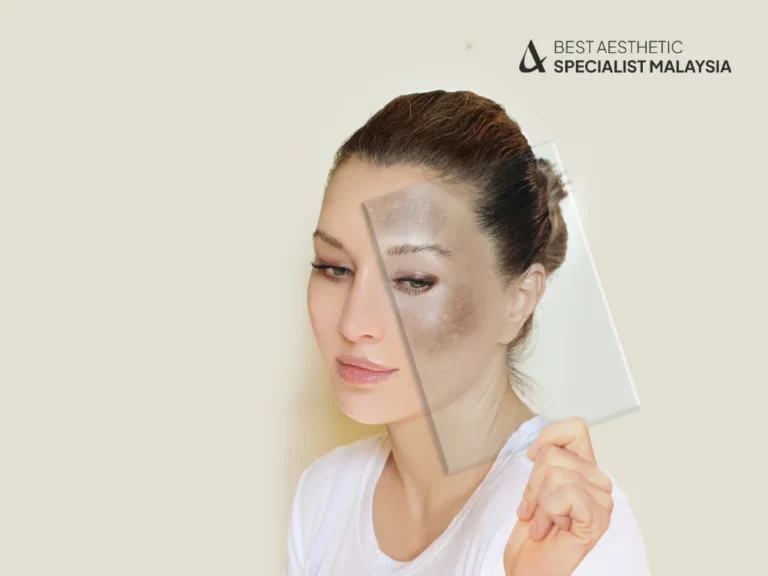Skin hyperpigmentation is a common condition where certain areas of the skin become darker than the surrounding skin. This occurs due to excess melanin production, often triggered by sun exposure, hormonal changes, inflammation, or skin injuries. While harmless, it can be frustrating for those seeking an even skin tone.
The good news? There are effective treatments and preventive measures to reduce hyperpigmentation and restore a more balanced complexion. In this article, we’ll explore the causes, treatment options, and expert tips for managing skin hyperpigmentation.
Causes of Skin Hyperpigmentation
1. Sun Exposure
Prolonged UV exposure is one of the leading causes of hyperpigmentation. The sun triggers an increase in melanin production, leading to sunspots and uneven skin tone.
2. Hormonal Changes
Pregnancy, birth control pills, and hormonal disorders can cause melasma—a form of hyperpigmentation that appears as dark patches, especially on the face.
3. Post-Inflammatory Hyperpigmentation (PIH)
Acne scars, burns, or injuries can lead to PIH, where dark marks remain after the skin heals.
4. Aging and Genetics
Some individuals are genetically predisposed to develop hyperpigmentation, while aging also plays a role in uneven skin tone.
5. Certain Medications & Medical Conditions
Some antibiotics, chemotherapy drugs, and medical conditions like Addison’s disease can cause skin darkening.
7 Effective Ways to Reduce Skin Hyperpigmentation
1. Use Sunscreen Daily
Sunscreen is your best defense against hyperpigmentation. A broad-spectrum SPF 30 or higher prevents further darkening of existing spots and protects against new ones. Opt for sunscreens containing zinc oxide and titanium dioxide for maximum protection.
2. Try Topical Treatments
Over-the-counter (OTC) and prescription creams can help lighten dark spots. Look for ingredients like:
- Vitamin C: A powerful antioxidant that brightens the skin and inhibits melanin production.
- Hydroquinone: A dermatologist-recommended skin-lightening agent that fades hyperpigmentation.
- Niacinamide: Reduces inflammation and evens out skin tone.
- Kojic Acid & Azelaic Acid: Both help lighten dark spots and improve overall skin texture.
3. Exfoliate Regularly
Exfoliation removes dead skin cells, allowing new, evenly pigmented skin to surface. Use:
- Chemical exfoliants like glycolic acid, lactic acid, or salicylic acid.
- Physical exfoliants like gentle scrubs (but avoid harsh ones that can cause irritation).
4. Consider Laser Treatments
Laser therapy, such as fractional laser or intense pulsed light (IPL), can target hyperpigmented areas and break down excess melanin. Always consult a dermatologist before opting for laser treatments.
5. Opt for Chemical Peels
Chemical peels use acids to remove the top layer of skin, revealing brighter skin underneath. Effective peels include:
- Glycolic acid peels for mild hyperpigmentation.
- TCA peels for deeper pigmentation issues.
- Salicylic acid peels for acne-related hyperpigmentation.
6. Try Natural Remedies
Some natural ingredients can help lighten dark spots:
- Aloe Vera: Contains aloesin, which helps reduce pigmentation.
- Licorice Extract: Known to inhibit melanin production.
- Turmeric: Contains curcumin, which brightens the skin.
- Lemon Juice: A natural bleaching agent (but use with caution, as it can be irritating).
7. Maintain a Skincare Routine
Consistency is key. Follow a skincare routine that includes:
- Cleansing to remove dirt and oil.
- Moisturizing to keep skin hydrated and prevent irritation.
- Using targeted treatments like serums or spot correctors.
Preventing Skin Hyperpigmentation
1. Avoid Picking at Your Skin
Scratching acne or wounds increases the risk of post-inflammatory hyperpigmentation.
2. Wear Protective Clothing
Hats, sunglasses, and protective clothing shield the skin from harmful UV rays.
3. Use Antioxidant-Rich Skincare
Antioxidants like vitamin C and E protect the skin from oxidative stress that contributes to hyperpigmentation.
4. Maintain a Healthy Diet
Eat foods rich in vitamin A, C, and E, such as citrus fruits, leafy greens, and nuts, to support skin health.
5. Consult a Dermatologist for Persistent Cases
If hyperpigmentation doesn’t fade with over-the-counter treatments, a dermatologist can recommend stronger treatments, such as prescription creams or in-office procedures.
FAQs about Skin Hyperpigmentation
1. What is the fastest way to get rid of skin hyperpigmentation?
The fastest way is through professional treatments like laser therapy, chemical peels, or prescription creams containing hydroquinone. However, results vary based on skin type and severity.
2. Can hyperpigmentation go away on its own?
Mild cases may fade over time, especially if you use sunscreen and follow a good skincare routine. However, deeper pigmentation may require treatment.
3. Are natural remedies effective for skin hyperpigmentation?
Some natural ingredients like aloe vera, licorice extract, and turmeric may help lighten dark spots, but they work more slowly than clinical treatments.
4. How long does it take to see results from hyperpigmentation treatments?
Results vary but typically take 4-12 weeks with consistent use of topical treatments. Professional treatments may show quicker results.
5. Can diet affect skin hyperpigmentation?
Yes. A diet rich in antioxidants, vitamins A, C, and E, and hydration can help improve skin health and reduce pigmentation.
6. Does sunscreen really help with hyperpigmentation?
Yes! Sunscreen prevents existing pigmentation from darkening and protects against new spots. It’s essential for all skin types, even on cloudy days.
Conclusion
Skin hyperpigmentation can be frustrating, but with the right treatments and preventive measures, you can achieve a clearer, more even complexion. Whether through skincare, professional treatments, or lifestyle changes, reducing hyperpigmentation is possible with patience and consistency.




